Trip to Positano and Amalfi / Výlet do Positana a Amalfi
I wrote this post in two languages. In English and Slovak language.
We have been planning to diversify our holiday on the Italian island of Ischia, located in the Gulf of Naples, from the very beginning. We knew we wanted to go see the myths of Pompeii and Mount Vesuvius. Well, we decided to go on this trip on the spot.
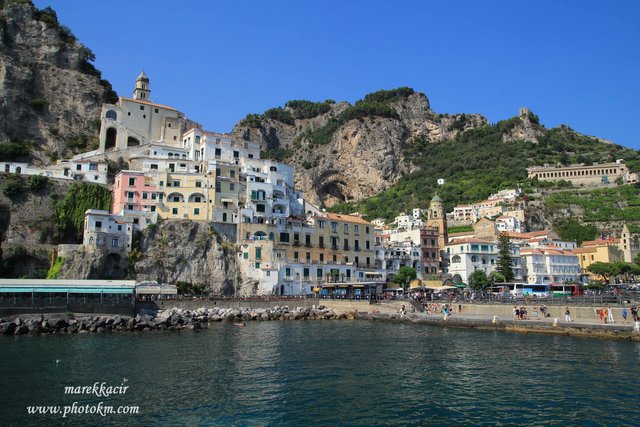
Local carriers offered a boat trip to the Amalfi Coast, specifically to Positano and Amalfi. We could not resist this offer for a boat trip along the Amalfi Coast.
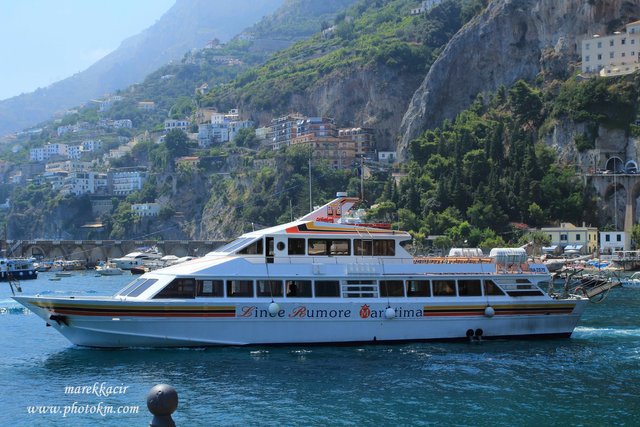
In the morning we leave the hotel and walk through the small streets to the port. We buy tickets and wait for our ship to arrive. A small, fast ship arrives at the port and we put it on it.
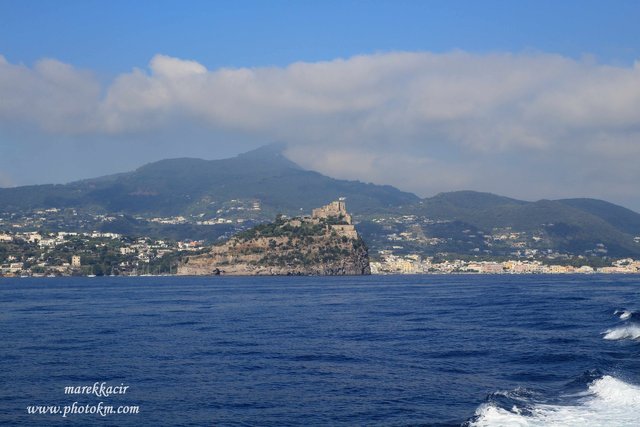
In a short time we see the castle of Aragonese and the town of Ischia moving away from us.
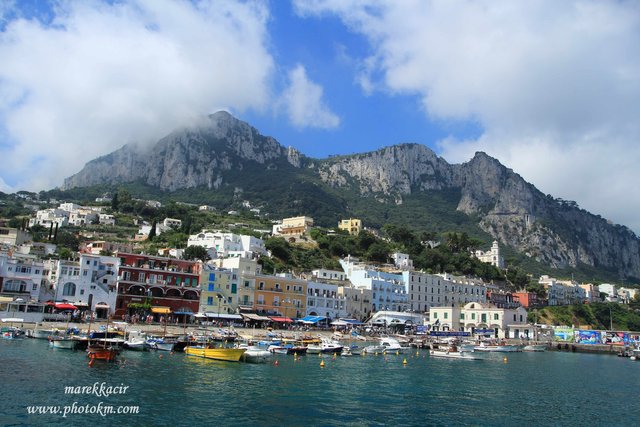
Along the way we have a short stop on the island of Capri, where other tourists board. We sit in our seats and since we can't get off the ship, we at least enjoy the view of the harbor and the skyline.
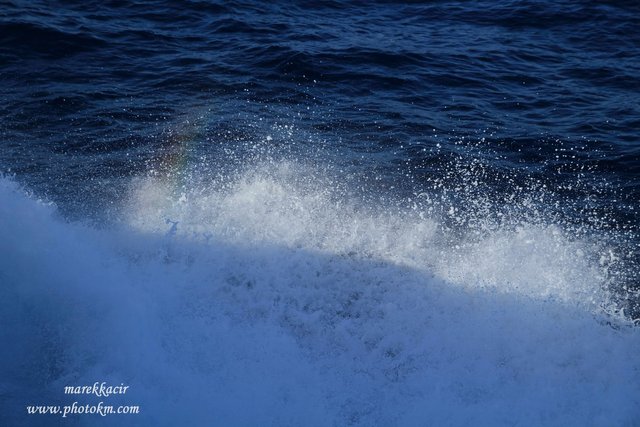
The cruise is fast and we enjoy it. That speed cannot be compared to the speed of the ferry with which we flew to the island of Ischia.
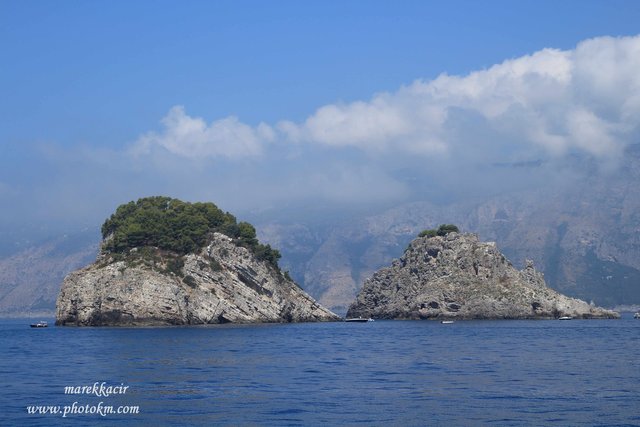
Our ship sails around two islands. The guide on the ship explains to us in English that according to some, these two islands are mentioned in Greek mythology as the islands where the Sirens lived. Sirens are creatures that lured sailors with their singing to swim to the island and wreck on it. They also lured Odyssey and Homer's epic Odyssey, but he resisted the lure and survived.
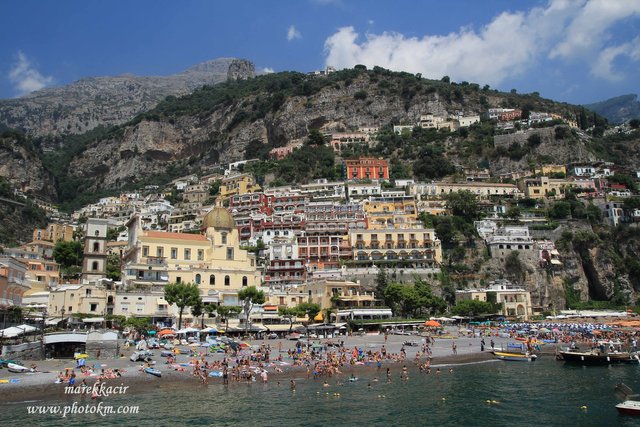
We continue sailing around other small islands. They look like only a rock sticking out of the water. The ship changes course and turns towards the shore. We are heading to a small town on the coast. It is the first destination of our trip - the city of Positano.
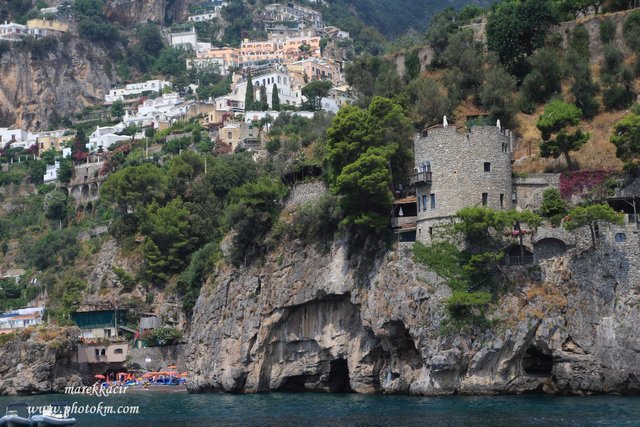
The ship sailed to shore and the captain informs us of the time of departure. We have plenty of time to tour the city. We don't waste time getting off the ship. The beauty of the city, as if carved into the steep slope and rocks, is breathtaking.
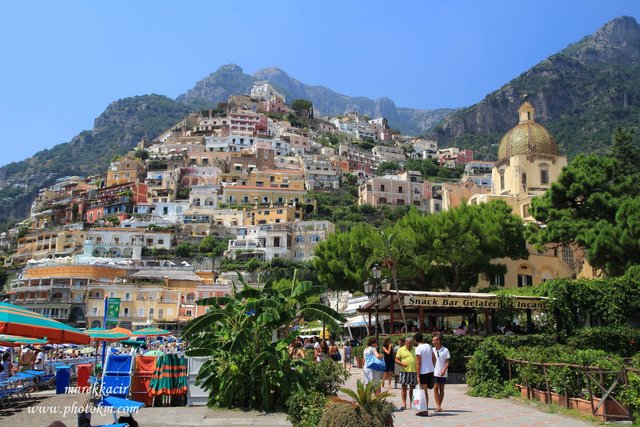
We learn that the ancient Romans built their villas on this coast. The core of the town was built around the Benedictine monastery founded in the 9th century. After the plundering of Pisi in 1268, Positano improved its defense, built walls and defensive towers. In 1343, the city was destroyed by a tsunami. In the 15th century, it was constantly under attack by Ottoman pirates. In the Middle Ages, Positano was part of the Amalfi Republic. It prospered as a trading port mainly in the sixteenth and seventeenth centuries. After the unification of Italy, its importance declined and it became a poor fishing village. Today it is a popular tourist destination. Since 1997, the Amalfi Coast, which includes Positano, has been on the UNESCO list.
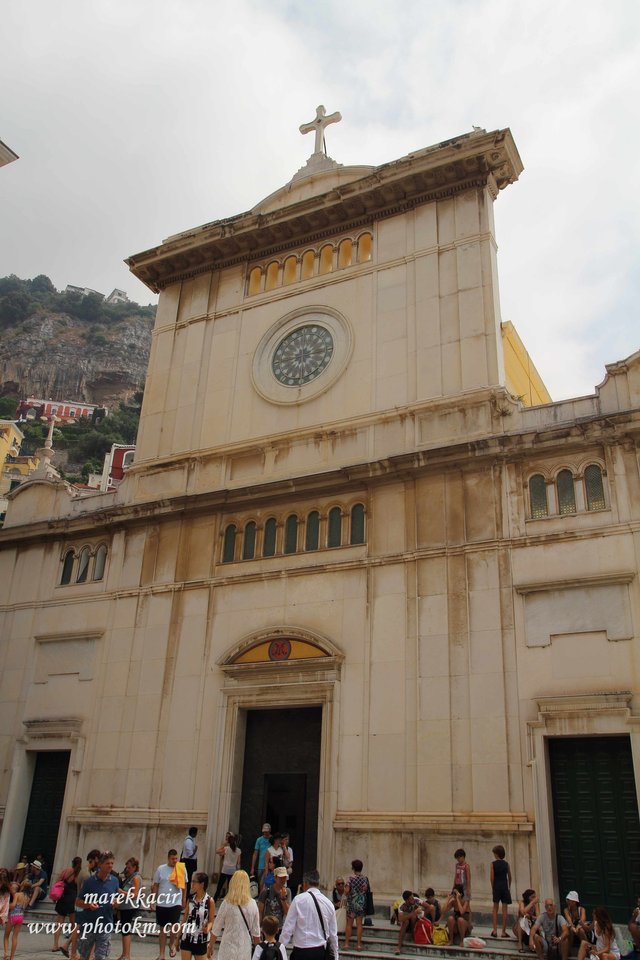

We looked around and headed the path that goes uphill. We hope that it will lead us to the dominant feature of the city, to the church Chiesa di Santa Maria Assunta. Managed to! We stand in front of him, buy tickets and enter the show. The origin of the church is connected with the Benedictine monastery, which was established in the second half of the 10th century.

The show was good, but we still miss something. We are attracted by the view of the city from a greater height. We continue up the narrow streets. Along the way we pass a number of souvenir shops. In addition to them, we also walk around such a small garden with chilly peppers.

It was worth it. After a while we had a nice view of the city and the sea.
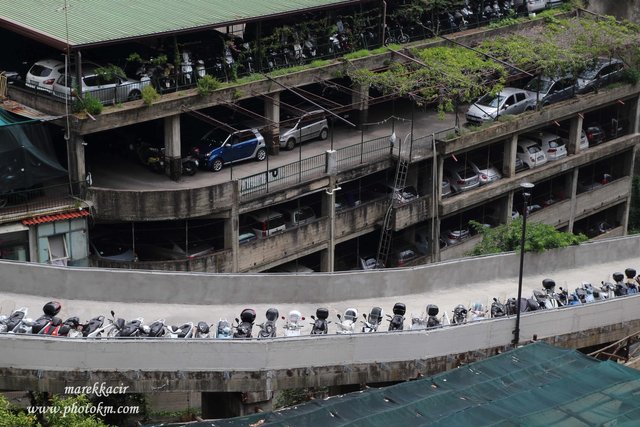
I also noticed a large parking lot, which is built here. If people parked in narrow streets, it would be difficult to walk through them, so I think such a parking lot near the city center is a great idea. It will serve both locals and tourists. It's time for the tour and we're boarding the ship. We say goodbye to Positan, but I believe we'll come here again sometime.
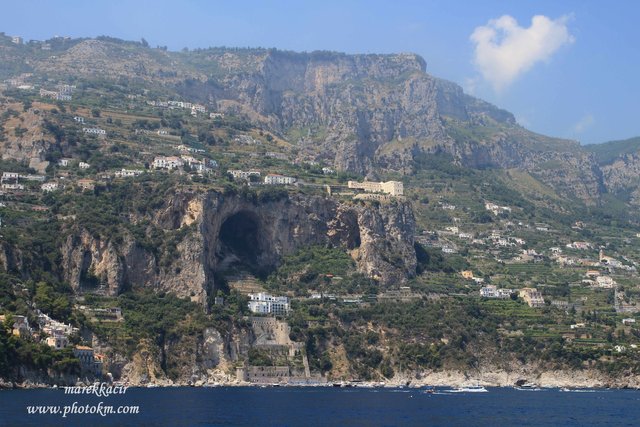
We continue around the coast. Almost the whole is littered with houses.
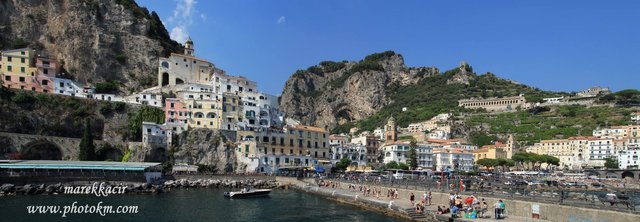
In front of us we already see the second destination of our journey and that is the historic city of Amalfi. The first written mention dates from the 6th century. The city quickly gained in importance and became the capital of the Republic of Amalfi. It was a major military force in the Mediterranean and the republic traded with Egypt, Syria and the Byzantine Empire. Its main rivals were the naval forces of Pisa and Genoa.
In 848, Amalfi troops assisted Pope Leo IV. In battle with the Saracens. The republic existed from the seventh century to the twelfth century. At the peak of the millennium, 70,000-80,000 people lived in Amalfi.
In 1073, the Amalfi occupied the Normans, but left the city a number of rights. In 1137, Amalfi was defeated by the naval republic of Pisa and annexed by the Normans and annexed to their territories of southern Italy. The importance of the city has declined. In 1343, Amalfi was hit by the tsunami, which destroyed the port and the lower part of the city. After this event, Amalfi was an important city only at the local level.
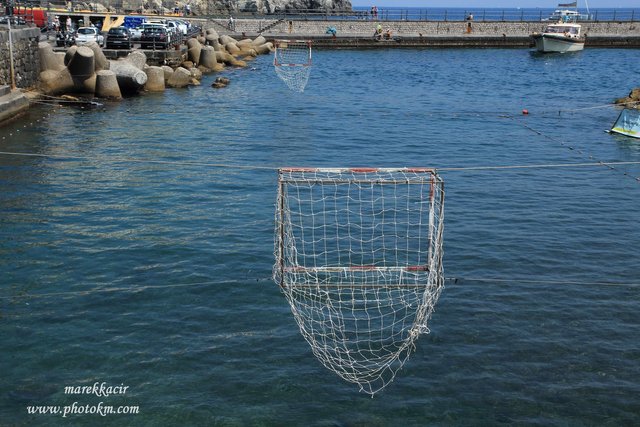
It is clear that the city does not lack sports activities. We pass one in the harbor.
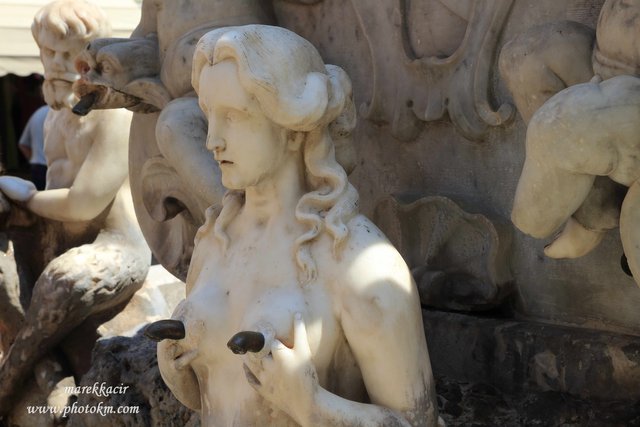
We roam the alleys and with us a lot of tourists. History lurks here at every turn.
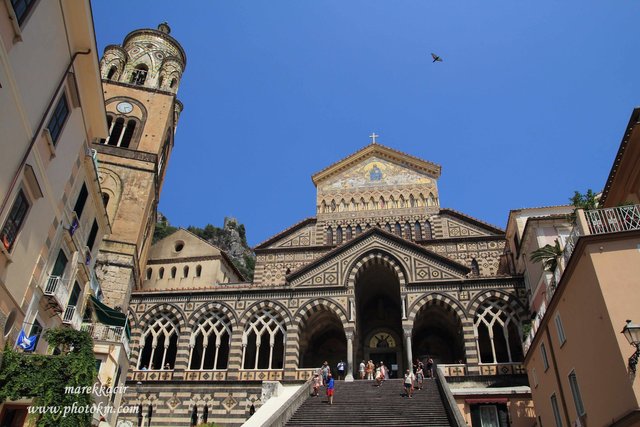
We come to the Cathedral of St. Andrew the Apostle. Its appearance is unique. Roman Catholic cathedral from the 9th century. The predominantly Arab-Norman Romanesque architectural style has been over several times fused and complemented by Romanesque, Byzantine, Gothic and Baroque elements.
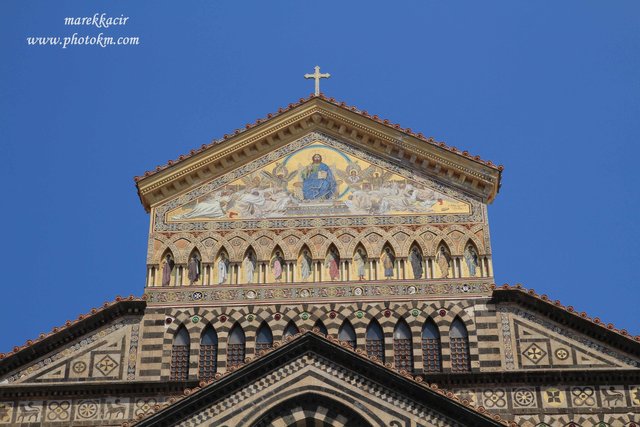
The remains of St. Andrew the Apostle, after whom the cathedral bears his name, were allegedly brought to Amalfi of Constantinople during the Fourth Crusade by Cardinal Peter of Capua.
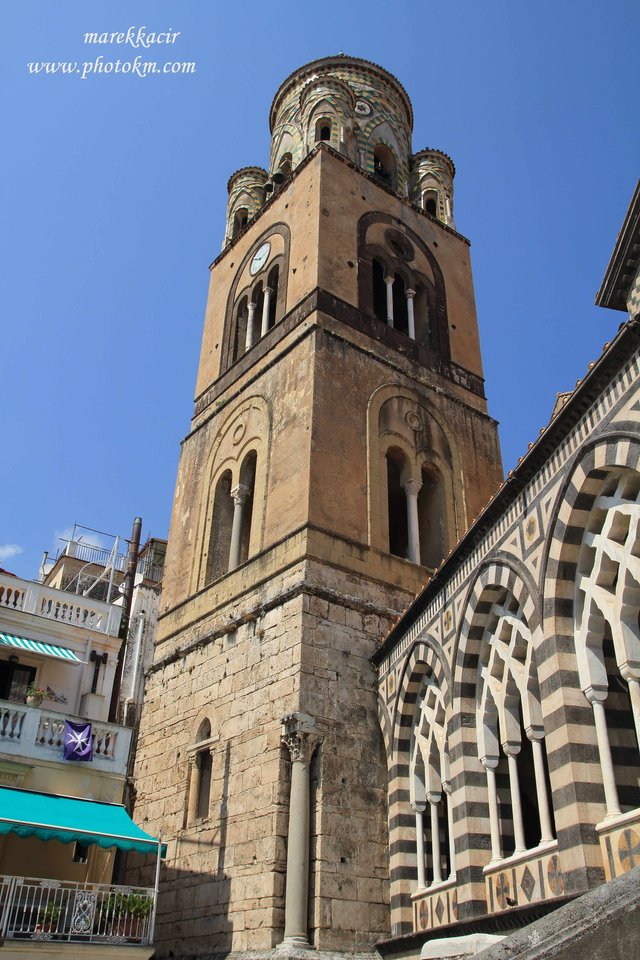
The trip is coming to an end and we are thinking about what we have seen and experienced today. Both Positano and Amalfi are towns built on a steep coast. This gives them a unique look and is a great attraction for tourists. I must say that I was very glad that we went on this trip. It was undoubtedly a beautiful experience to see the beauty and architecture with your own eyes.
well thank you
Po Slovensky
Našu dovolenku na talianskom ostrove Ischia, ktorý sa nachádza v Neapolskom zálive, sme si plánovali spestriť už od začiatku. Vedeli sme, že si chceme ísť pozrieť bájne Pompeje a sopku Vezuv. No to že pôjdeme aj na tento výlet, sme sa rozhodli až na mieste.
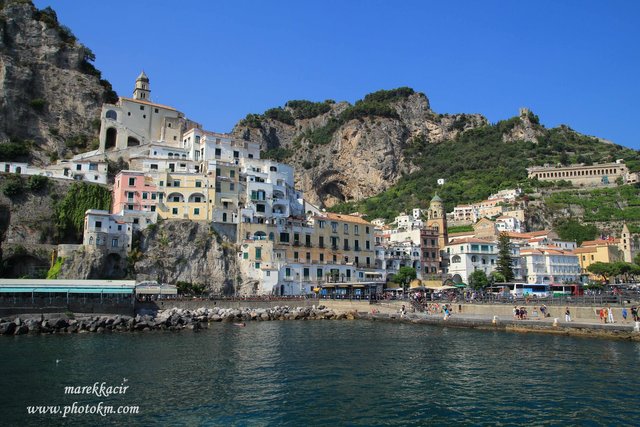
Miestni prepravcovia ponúkali výlet na lodi na pobrežie Amalfi, konkrétne do miest Positano a Amalfi. Neodolali sme tejto ponuke na výlet loďou pozdĺž pobrežia Amalfi.
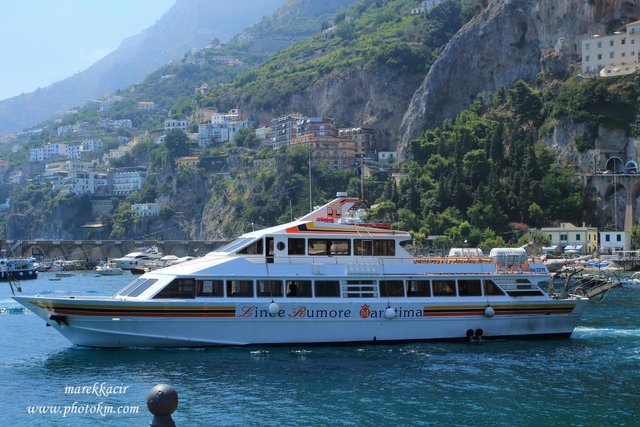
Ráno odchádzame z hotela a po maličkých uličkách prichádzame do prístavu. Kupujeme si lístky a čakáme, kým naša loď pripláva. Do prístavu prichádza malá, rýchla loď a my na ňu nasadáme.
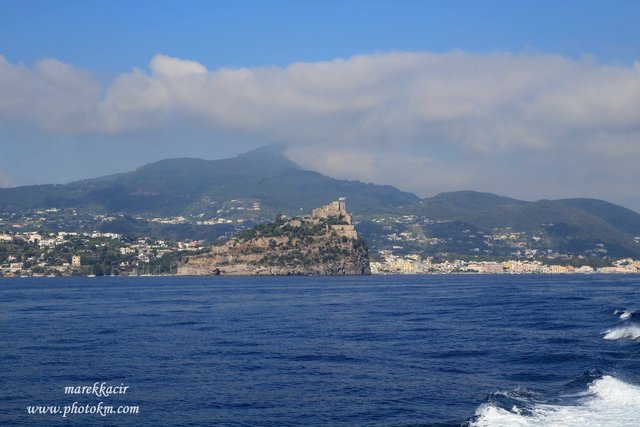
O malú chvíľu už vidíme ako sa nám hrad Aragonese a mestečko Ischia vzďaľuje.
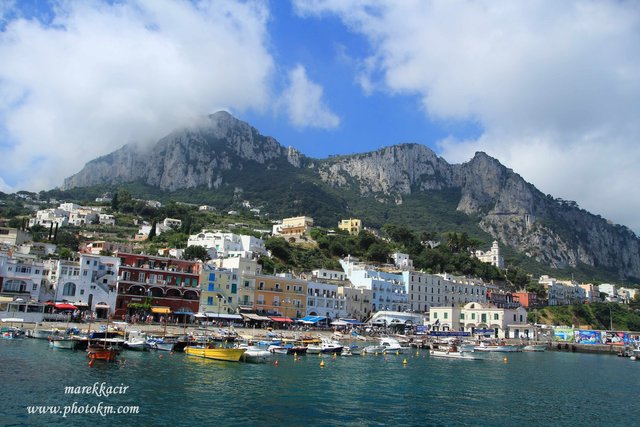
Po ceste máme krátku zastávku na ostrove Capri, kde nastupujú ďalší turisti. My sedíme na svojich miestach a nakoľko nemôžeme z lode vystúpiť, tak si aspoň vychutnávame pohľad na prístav a panorámu.
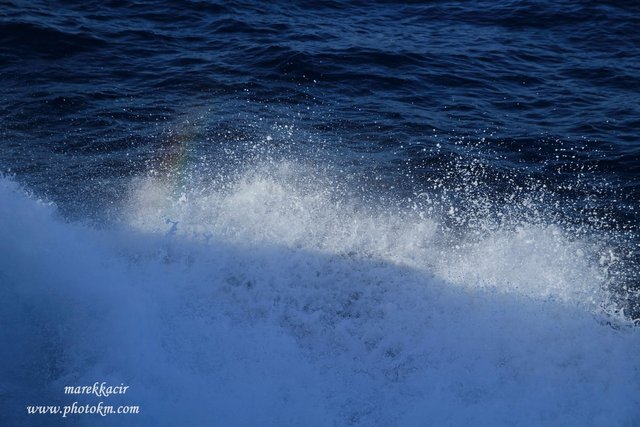
Plavba prebieha rýchlo a my si ju užívame. Tá rýchlosť sa nedá porovnať s rýchlosťou trajektu s ktorým sme sa dopravili na ostrov Ischia.
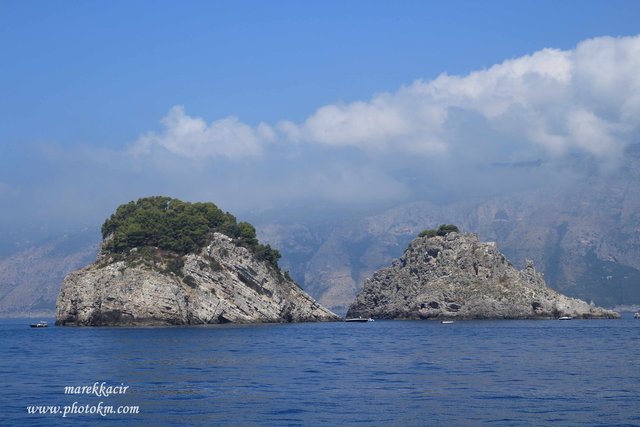
Naša loď pláva okolo dvoch ostrovov. Sprievodca na lodi nám po anglicky vysvetľuje, že podľa niektorých sú práve tieto dva ostrovy spomínané v gréckej mytológii ako ostrovy na ktorých žili Sirény. Sirény sú bytosti, ktoré vábili námorníkov svojim spevom, aby k ostrovu priplávali a stroskotali na ňom. Vábili takto aj Odysea a Homérovom epose Odysea, ten ale vábeniu odolal a prežil.
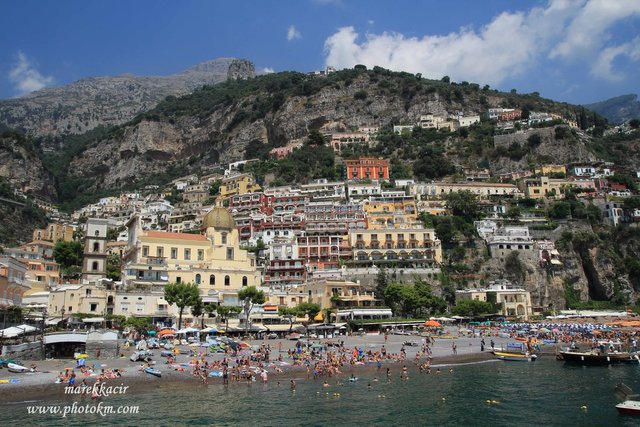
Pokračujeme v plavbe okolo ďalších malých ostrovčekov. Vyzerajú, ako by z vody trčala iba skala. Loď mení kurz a otáča sa smerom k pobrežiu. Mierime k mestečku na pobreží. Je ním prvý cieľ našej cesty – mesto Positano.
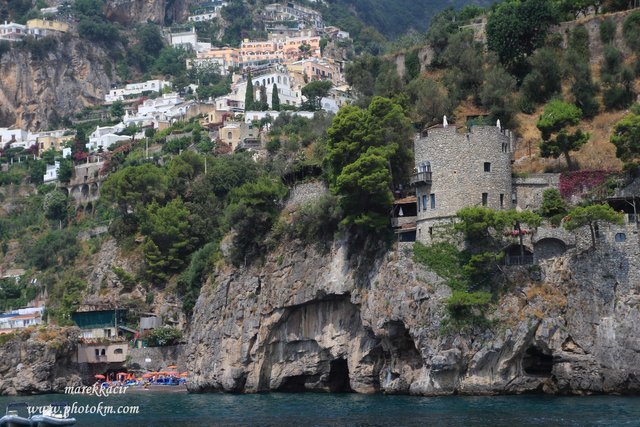
Loď priplávala k pobrežiu a kapitán nás informuje o čase odchodu. Máme dostatok času na prehliadku mesta. Nestrácame čas a vystupujeme z lode. Tá krása pri pohľade na mesto akoby vytesané do strmého svahu a skál vyráža dych.
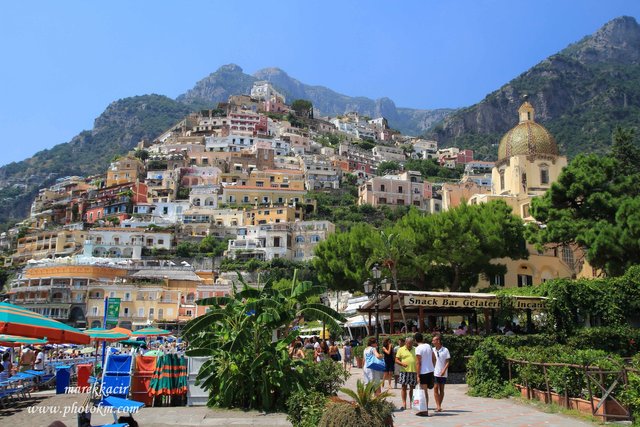
Dozvedáme sa, že už staroveký Rimania postavili na tomto pobreží svoje vily. Jadro mesta vznikalo okolo Benediktínskeho kláštora založeného v 9. storočí. Po vyplienení Pisi v roku 1268 zlepšilo Positano svoju defenzívu, vybudovali hradby a obranné veže. V roku 1343 mesto zničilo Tsunami. V 15. storočí bolo neustále pod útokmi Osmanských pirátov. V stredoveku bolo Positano súčasťou republiky Amalfi. Prosperovalo ako obchodný prístav hlavne v šestnástom a sedemnástom storočí. Po zjednotení Talianska jeho význam poklesol a stala sa z neho chudobná rybárska dedina. Dnes je to turistami vyhľadávaná destinácia. Od roku 1997 je pobrežie Amalfi, do ktorého patrí aj Positano, zapísaného na zozname UNESCO.
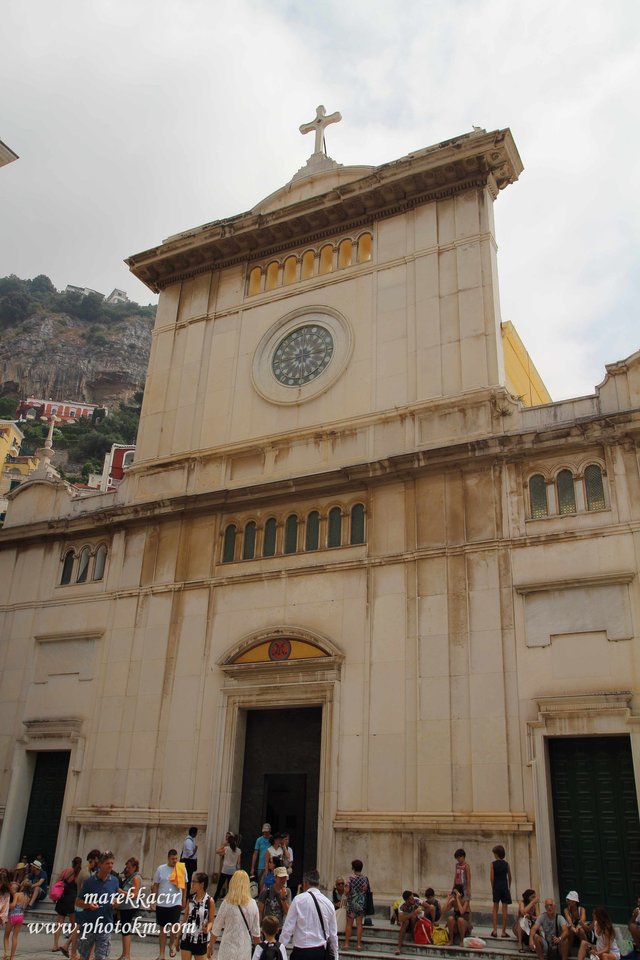
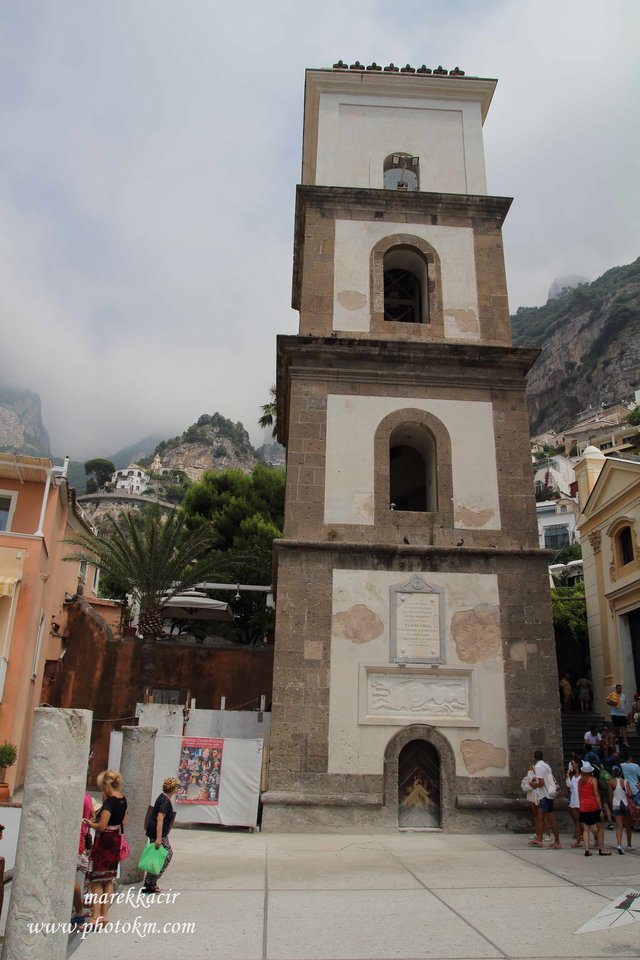
Porozhliadali sme sa a mierime cestičkou, ktorá ide do kopca. Dúfame, že nás dovedie k dominante mesta, ku kostolu Chiesa di Santa Maria Assunta. Podarilo sa! Stojíme pred ním, kupujeme si lístky a vchádzame dovnútra na prehliadku. Vznik kostola je spätý s benediktínskym kláštorom ktorý vznikol v druhej polovici 10. storočia.

Prehliadka bola dobrá, avšak niečo nám tu stále chýba. Láka nás pohľad na mesto z väčšej výšky. Po úzkych uličkách pokračujeme hore. Po ceste míňame množstvo obchodíkov so suvenírmi. Okrem nich prechádzame aj okolo takejto malej záhradky s chilly papričkami.

Oplatilo sa. Po chvíli sa nám naskytol pekný výhľad na mesto a more.
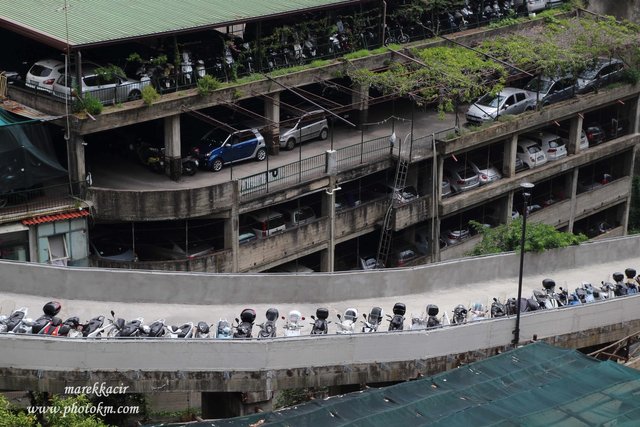
Všimol som aj veľké parkovisko, ktoré je tu vybudované. Ak by ľudia parkovali po úzkych uličkách, dalo by sa cez ne len ťažko prechádzať, preto si myslím, že takéto parkovisko pri centre mesta je výborný nápad. Poslúži domácim, ale aj turistom.
Čas na prehliadku nám už uplynul a nastupujeme na loď. Lúčime sa s Positanom, no verím, že sa sem ešte niekedy prídeme pozrieť.
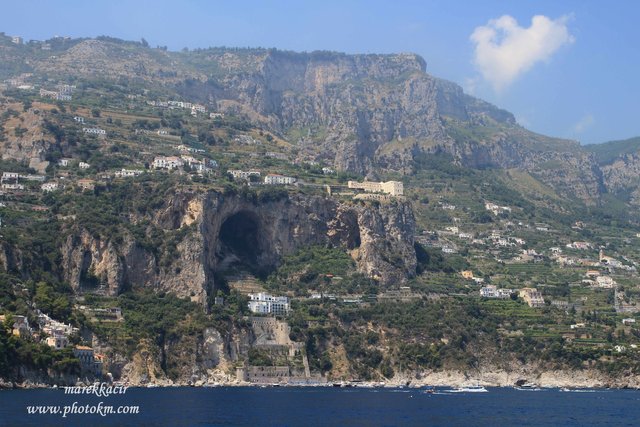
Okolo pobrežia pokračujeme ďalej. Takmer celé je posiate domčekmi.
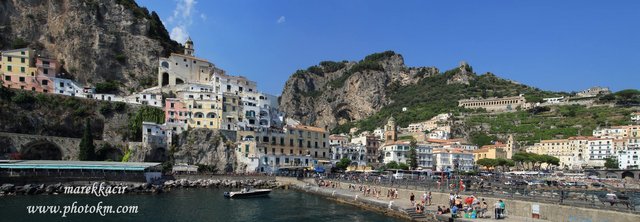
Pred nami už vidíme druhý cieľ našej cesty a tým je historické mesto Amalfi. Prvá písomná zmienka pochádza zo 6. storočia. Mesto rýchlo získalo na dôležitosti a stalo sa hlavným mestom Republiky Amalfi. Bola to významná vojenská sila v stredozemnom mori a republika obchodovala s Egyptom, Sýriou či Byzantskou ríšou. Jej hlavnými rivalmi boli námorné sily Pisa a Janov.
V roku 848 amalfské jednotky pomáhali Pápežovi Leovi IV. V boji so Saracénmi. Republika existovala od siedmeho storočia do dvanásteho storočia. Na vrchole tisícročia žilo v Amalfi 70000-80000 ľudí.
V roku 1073 Amalfi obsadili Normani, ale ponechali mestu množstvo práv. V roku 1137 bolo Amalfi porazené námornou republikou Pisa a anektované Normanmi a pripojené k ich územiam južného Talianska. Dôležitosť mesta poklesla. V roku 1343 zasiahlo Amalfi Tsunami, ktoré zničilo prístav a spodnú časť mesta. Amalfi po tejto udalosti bolo dôležitým mestom už len na lokálnej úrovni.
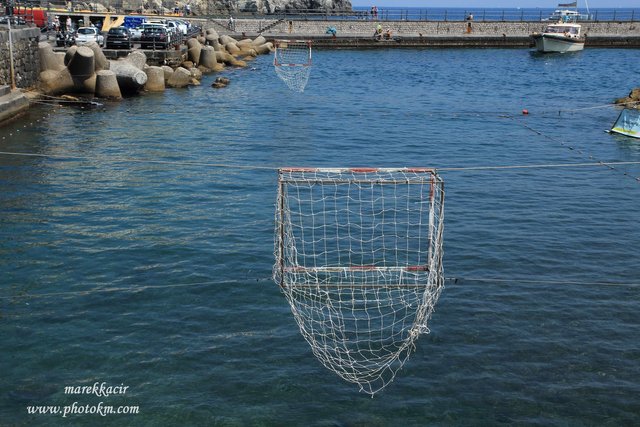
Je vidno, že v meste nechýbajú športové aktivity. Priamo v prístave okolo jednej prechádzame.
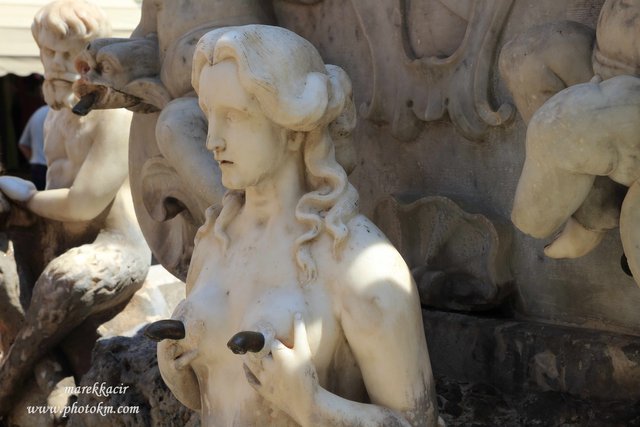
Motáme sa po uličkách a spolu s nami množstvo turistov. História tu číha na každom kroku.
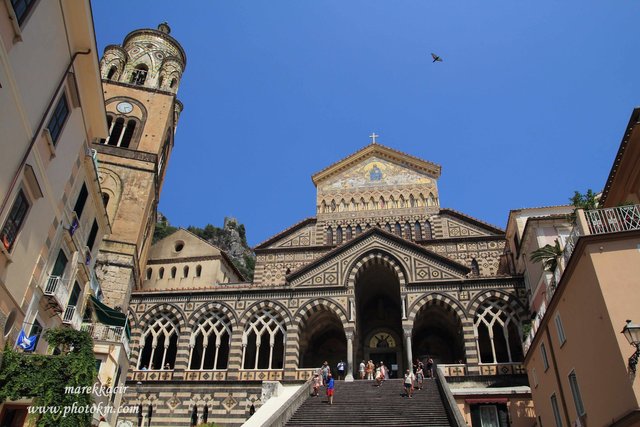
Prichádzame ku Katedrále sv. Ondreja Apoštola. Jej vzhľad je jedinečný. Rímskokatolícka katedrála z 9. storočia. Prevažne arabsko-normansko románsky architektonický štýl bol niekoľkokrát prestavaný a doplnený románskymi, byzantskými, gotickými a barokovými prvkami.
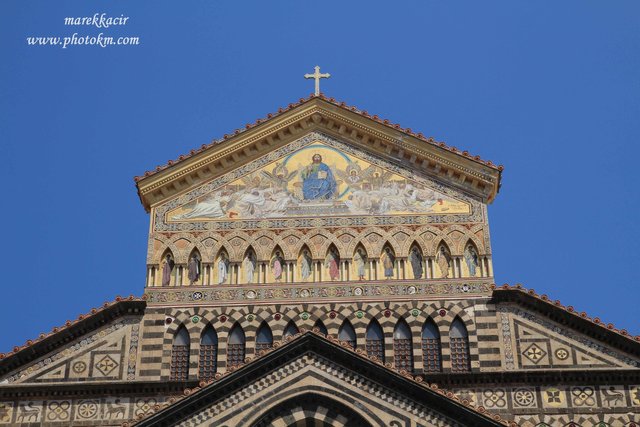
Ostatky sv. Ondreja Apoštola, po ktorom nesie katedrála svoje meno, boli údajne privezené do Amalfi z Konštantínopolu počas štvrtej krížovej výpravy kardinálom Petrom z Capui.
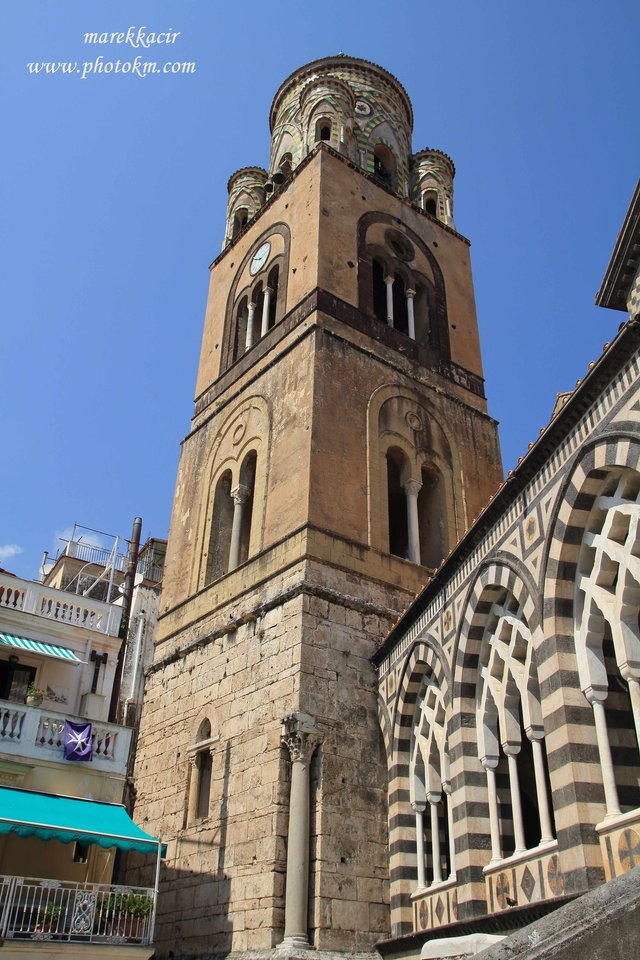
Výlet sa končí a my pri rýchlej plavbe premýšľame, čo všetko sme dnes videli a zažili. Positano aj Amalfi sú mestá vybudované na strmom pobreží. To im dáva jedinečný vzhľad a pre turistov predstavujú veľké lákadlo. Musím povedať, že som bol veľmi rád, že sme sa na tento výlet vybrali. Bol to nepochybne krásny zážitok, vidieť tu krásu a architektúru na vlastné oči.
Ďakujem
Congratulations @photoparadise! You received the biggest smile and some love from TravelFeed! Keep up the amazing blog. 😍 Your post was also chosen as top pick of the day and is now featured on the TravelFeed.io front page.
Thanks for using TravelFeed!
@smeralda (TravelFeed team)
PS: TravelFeed is in social media to reach more people, follow us on Facebook, Instagram, and Twitter.